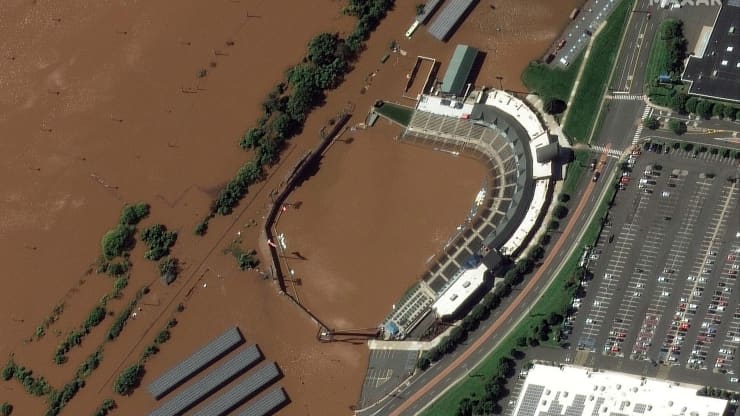By Erik Sherman | Via globest.com

Flooding is an ugly and devastating way of seeing property value wiped away. According to the Federal Emergency Management Agency’s standard warning, an inch of standing water in a single-story 1,000 square foot home can cause $11,000 of damage.
But the potential for damage to commercial buildings is just as grave, if not more so. For example, a 2017 study out of the University of Nebraska at Omaha showed that “[c]ommercial buildings represent 13% of all structures in the 100-year floodplain in Sarpy County (Omaha, NE) and 16% in Fargo/Moorhead (ND and MN), yet account for half of total potential flood damage exposure as represented by depreciated structural replacement values (DSRVs).”
Both having and understanding flood insurance is critical to CRE property management. Some recently changed plans and practices require businesses and investors to reevaluate where they stand.
FEMA updated its National Flood Insurance Program (NFIP) through a new approach called Risk Rating 2.0. Using new technology and data analysis, the agency is changing how it views the risk of floods. New policies incorporated the new approach starting on October 1, 2021, while renewals on April 1, 2022 or later also will use the changed methodology.
The new approach uses new physical models and actuarial models, looking at flood frequency, flood type, distance between the property and water body, and property rebuilding cost, according to Carter Bumgardner, a producer at Graham Company, one of the largest insurance brokers in the US.
“Because technology is getting so much better and the carriers and FEMA can run much better predictive models, they are better at pricing. Whether that’s going up or down depends on the risk itself,” Bumgardner tells GlobeSt.com. “I believe over 70% of insureds that buy a national flood insurance policy [will see] their rates for that specific policy go up.”
Blame climate change. Large floods have scared carriers and the federal government into reassessing the likelihood that a property will face a loss from flooding.
“Flood insurance has been changing drastically over five to ten years with how underwriters are evaluating the risk,” Bumgardner adds. Carriers “felt they could give higher limits with lower deductibles and collect less premiums” for structures considered not to be in high hazard flood zones. No longer. “They’re now offering less limits, higher deductible with a higher premium” using new modeling techniques”
As prices go up, there are strategies companies can use to try containing the cost. “A national flood insurance policy is normally only going to provide limits of $500K for the building, $500,000 for the contents, and no coverage for business interruption,” says Bumgardner. Commercial coverage typically has a $500,000 deductible. Put the two together, and it’s possible to bridge coverage.
Bumgardner also says that stripping flood insurance out of a normal property and casualty policy and getting it through an alternative carrier can help contain costs.


